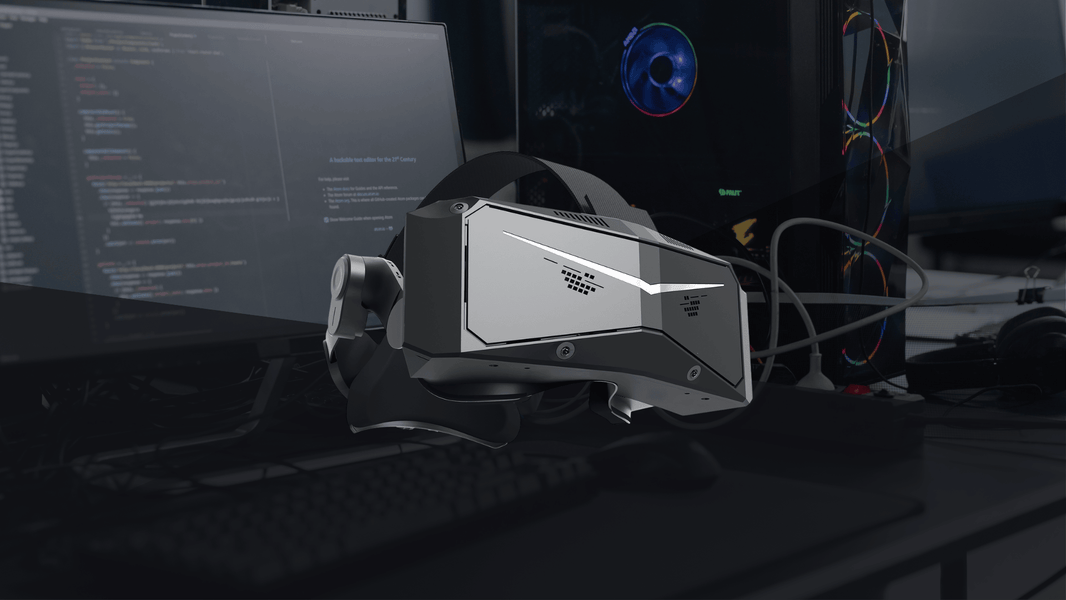Optimizing VR performance is never a one-size-fits-all task — every PC system is different, with unique hardware and software configurations that impact results. This guide offers a solid starting point for achieving smooth and immersive gameplay in iRacing using the Pimax Crystal Light, especially for users running mid-range GPUs like the RTX 4070 Super.
We’ll focus on two powerful features now natively supported in iRacing:
-
Multi-View Projection (MVP)
-
Fixed Foveated Rendering (FFR)
When used together, these technologies dramatically reduce GPU load by optimizing how your field of view is rendered. The result: smoother framerates, even in demanding scenarios with full race grids or complex track environments — all while maintaining impressive visual clarity.
Let’s walk through the optimal settings in Pimax Play, iRacing, and related system files to unlock this performance boost.
System Specs Used for This Guide:
CPU: Intel i5-13600K
GPU: NVIDIA RTX 4070 Super
RAM: 64GB DDR5
Headset: Pimax Crystal Light (DisplayPort PCVR)
Pimax Play Settings
Once your Crystal Light is connected and recognized in Pimax Play, configure the following:
-
Refresh Rate: Set to 90Hz
Previously on a 4070 Super, stable FPS required 72Hz, but now, thanks to MVP + native FFR, 90Hz is achievable again.
-
Render Quality: Set to Medium (0.75x)
This strikes an ideal balance between GPU load and image sharpness. Only consider increasing to High (1.0x) if you own a GPU like the RTX 5090 or beyond.
-
FFR (in Pimax Play): Turn OFF
We’ll use iRacing’s native FFR instead — don’t stack the two systems.
-
Everything else: Leave at Default
This includes brightness, contrast, color tuning, distortion correction, etc. Unless you have a specific visual issue to address (e.g., chromatic aberration or brightness imbalance), the defaults are generally well-optimized.

OpenXR Runtime Notice
-
Do not enable OpenXR Toolkit enhancements, like foveated rendering or reprojection, unless you're very familiar with them.
-
These can conflict with iRacing’s native rendering features, especially now that the sim handles both MVP and FFR natively.
Trying to stack multiple optimization layers can introduce instability, degraded visuals, or redundant rendering logic. Let iRacing and Pimax handle optimization natively — it’s more efficient and reliable.
(Screenshot only with Pimax play setting):

In-Game iRacing Graphics Settings
The iRacing graphics tab can appear overwhelming. Let’s break it down into manageable parts, with a focus on VR optimization:
Top Section:
-
Resolution: 1024x720
-
This only affects the mirrored display on your PC monitor – not the headset.
SPS / MVP Setting: Switch from SPS to MVP
MVP multiview projection gives VR users a dramatic performance boost by natively adding fixed-fitted rendering to iRacing and activates iRacing’s own FFR system. You must restart iRacing after making this change.
Section Breakdown
Left Column:
-
Detail Presets: Set most to Low
-
Cars: Keep at High (front) and reasonable for mirrors
-
Event: Optional, but can offer some immersion benefits
-
Dynamic LOD: Off
-
Avoids pop-in artifacts that can spike frame times in VR
Middle Column:
-
Anti-Aliasing: MSAA x4
-
Crisp edges with acceptable performance; try Simple + Sharpening for better FPS on crowded tracks.
-
Shadow Maps: On (basic only)
-
Object Self-Shadowing / Dynamic Shadows / Night Shadows: All Off
-
Shader Quality: High
-
Only use Ultra for GPUs like the RTX 5080 or better.
-
Right Column:
-
Mirrors: Use Virtual Mirror
-
Avoid Cockpit Mirrors at 90Hz – too costly on performance
-
-
Headlights in Mirrors: Low Detail
-
Sharpening: Off, unless using “Simple” AA filter
-
2048 Car Textures: On
-
SSR (Screen Space Reflections): Off
-
Video Memory Swap: On

Performance Tips if You’re Still Struggling
If your FPS still dips in crowded races (e.g., 20–30 cars), especially on lower-tier systems:
-
Turn Off Cockpit Mirrors
-
Switch to virtual mirror mid-session for instant FPS recovery.
-
-
Drop to 72Hz in Pimax Play
-
A solid fallback for a stable experience on lower-end GPUs.
-
-
Leverage Native FFR (Fixed Foveated Rendering) via MVP
-
Without an MVP, native FFR won’t function. Ensure MVP is enabled and restart the sim.
-

Editing Native FFR (Advanced Optimization)
In the Documents\iRacing\rendererDX11OpenXR.ini file:
-
foviatedOuterPickRes: Controls outer zone resolution -
foviatedInsetWidth: Controls inner focus zone size
Recommended Value Range: 25–50
-
Lower numbers = better performance (but lower quality in peripheral vision)
-
Higher numbers = better clarity (but higher GPU load)
You must test different combinations to find the ideal balance between clarity and performance. Going below 25 or above 50 will be auto-corrected by iRacing.

Final Thoughts
Pimax Crystal Light’s visual clarity and wide FOV pair perfectly with iRacing’s native MVP + FFR support. Even on a mid-range GPU like the RTX 4070 Super, users can now enjoy a smooth 90Hz racing experience at Medium render quality — something that previously required 4090-tier power.
As always, performance may vary slightly depending on system drivers, background processes, and thermal conditions. This guide is here to act as your optimized baseline — feel free to fine-tune from here to meet your personal performance and visual clarity targets.










